Recent Posts
How Does Mold Get Into the HVAC System?
7/16/2024 (Permalink)
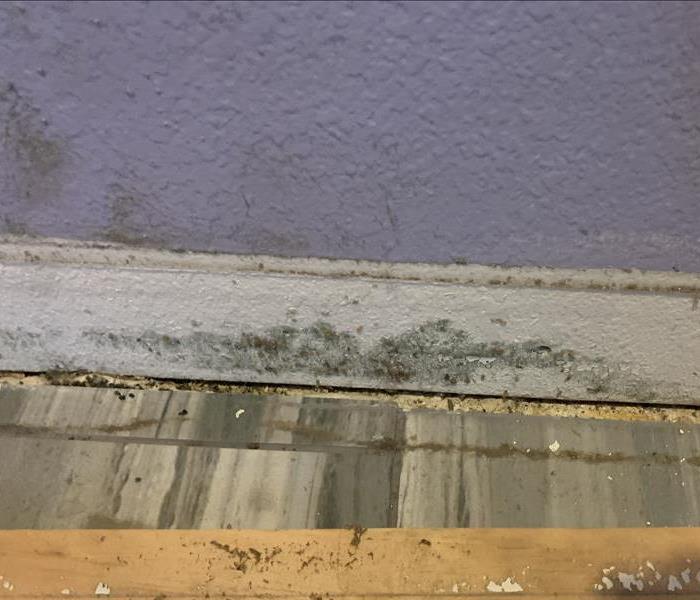 Mold in your HVAC system can cause serious damage to your home.
Mold in your HVAC system can cause serious damage to your home.
Mold in your HVAC system is a serious problem that can cause extensive property damage and impact your home's air quality. Understanding how mold gets into the HVAC system is crucial for prevention and effective remediation. In this blog, we will explore the causes of mold growth in HVAC systems and offer some tips to prevent it.
What Causes Mold Growth in HVAC Systems?
Mold spores are a natural part of the environment and can easily enter your home. Once inside, they can find their way into your HVAC (Heating, Ventilation, and Air Conditioning) system. Here are some common ways mold can infiltrate your HVAC system:
1. Moisture Buildup
One of the primary factors for mold growth is moisture. HVAC systems can accumulate moisture through condensation. When warm, humid air passes over the cold evaporator coils, condensation forms. If this moisture isn't properly drained, it can create a perfect environment for mold growth.
2. Dirty Filters
Dirty or clogged filters can restrict airflow, causing moisture to build up in the system. When filters aren't changed regularly, dust and debris can accumulate, providing nutrients for mold spores. Over time, these spores can grow into mold colonies.
3. Poor Ventilation
Proper ventilation is crucial for preventing mold. When there is poor ventilation in your HVAC system, moisture can become trapped. Stagnant air combined with moisture creates an ideal breeding ground for mold. Ensuring your system has adequate ventilation can help reduce this risk.
4. Leaking Ducts
Leaks in your ductwork can allow humid air to enter the system. When this humid air comes into contact with cooler surfaces within the HVAC system, it can cause condensation. This moisture can then lead to mold growth. Regular inspection and maintenance of ductwork can help prevent leaks and moisture buildup.
5. Standing Water
Standing water in any part of your HVAC system can lead to mold growth. This can occur in drip pans, condensate lines, or other areas where water may accumulate. Ensuring that these components are regularly cleaned and maintained is essential.
Signs of Mold in Your HVAC System
Recognizing the signs of mold in your HVAC system early can help prevent extensive damage and health issues. Some common indicators include:
- Musty odors coming from your vents.
- Visible mold growth on vents or around the HVAC unit.
- Increased allergy symptoms or respiratory issues among household members.
- Frequent headaches, nausea, or fatigue.
If you notice any of these signs, it’s essential to address the issue as quickly as possible.
Preventing Mold in Your HVAC System
Prevention is key when it comes to mold in your HVAC system. Here are some tips to help keep your system mold-free:
- Regular Maintenance
Regular maintenance of your HVAC system is crucial. This includes cleaning coils, drip pans, and other components where moisture can accumulate. A professional HVAC technician can perform these tasks and identify any potential issues.
- Change Filters Regularly
Changing your HVAC filters regularly is one of the easiest ways to prevent mold. Clean filters ensure proper airflow and reduce the chance of moisture buildup. Check your filters monthly and replace them as needed.
- Ensure Proper Ventilation
Make sure your HVAC system is properly ventilated. This can help reduce moisture buildup and prevent mold growth. If necessary, consider installing a dehumidifier to control humidity levels in your home.
- Inspect Ductwork
Regularly inspect your ductwork for leaks and other issues. Seal any leaks promptly to prevent humid air from entering the system. Properly insulated ducts can also help maintain consistent temperatures and reduce condensation.
- Keep the Area Dry
Ensure that the area around your HVAC system is dry. Fix any leaks or water issues promptly, and use a dehumidifier in damp areas to keep humidity levels in check.
Mold in your HVAC system can cause serious damage to your home. By understanding how mold gets into the system and taking preventive measures, you can keep your HVAC system mold-free. Regular maintenance, proper ventilation, and prompt attention to moisture issues are key to preventing mold growth. If you suspect mold in your HVAC system, contact a professional mold remediation service like SERVPRO® to ensure safe and effective removal.
The Importance of Professional Water Extraction Services
6/12/2024 (Permalink)
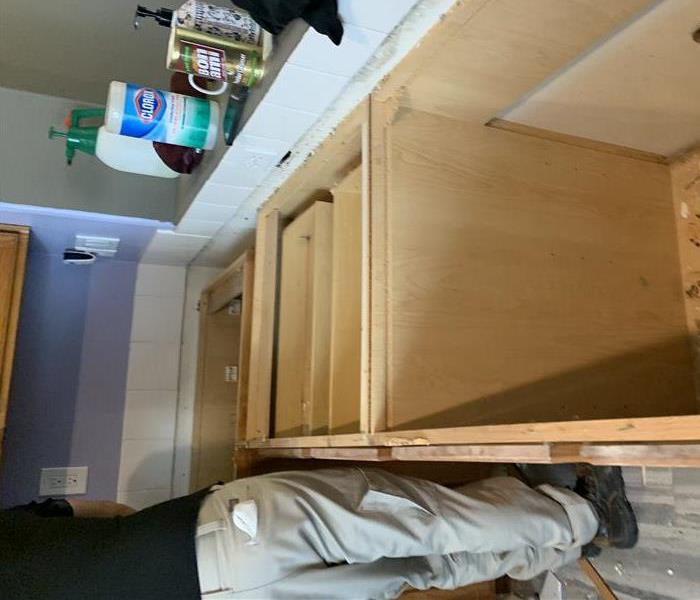 Our team will perform water extraction services and cleanup after any type of water damage.
Our team will perform water extraction services and cleanup after any type of water damage.
Water damage is a common issue that can wreak havoc on your property, and it can be caused by various factors, ranging from heavy rainfall to burst pipes. When water damage occurs, it is essential to act quickly to minimize the damage and prevent the spread of unwanted bacteria and mold.
One critical step in the water damage restoration process is professional water extraction. Water extraction involves removing any standing water from your property and drying out any moisture in the affected areas. It is critical to have a qualified and well-equipped team of professionals perform this task to ensure that your property is properly restored.
The importance of professional water extraction services cannot be overstated. Here are a few reasons why you should always enlist the help of experts when dealing with water damage.
Prevents Structural Damage:
Water can cause significant damage to the structure of your home or business. If left untreated, the water can seep into the walls, floors, and ceilings, weakening their integrity and compromising their stability. This can lead to serious structural damage and may require extensive repairs or even complete replacement. Professional water extraction services can prevent this damage by thoroughly removing all excess water from your property and implementing measures to dry and dehumidify the area. This helps to ensure that the structural components of your property remain intact and protected.
Prevents Mold Growth:
Mold growth can be a significant issue after a water damage event. Moisture-rich environments are breeding grounds for mold and other harmful bacteria that can pose a health risk to humans and pets. If not adequately addressed, mold can spread quickly, causing respiratory issues, skin irritation, and other health problems. Professional water extraction services can help prevent mold growth by removing excess moisture from the affected areas and implementing proper ventilation and airflow.
Saves Time and Money:
Water damage restoration can be a costly and lengthy process. The longer the water sits, the more damage it can cause, and the more expensive restoration becomes. By enlisting the help of professional water extraction services, you can save time and money in the long run. Professionals have access to specialized equipment and are trained to identify and address all areas where water damage may be present. This ensures that the water is thoroughly extracted, and the restoration process can begin as quickly as possible.
Assists with Insurance Claims:
Water damage can be overwhelming, particularly when dealing with insurance claims. Professional water extraction services can provide detailed documentation of the damage and the restoration process. This can assist with insurance claims and ensure that you receive fair compensation.
In conclusion, professional water extraction services are a critical component of the water damage restoration process. They prevent structural damage, prevent mold growth, save time and money, and assist with insurance claims. By enlisting the help of trained and experienced professionals, you can rest assured that your property will be properly restored to its pre-damage condition. If you have experienced water damage, don't hesitate to call SERVPRO® to ensure a prompt and professional restoration.
The Importance of Air Quality Testing After a Fire
4/17/2024 (Permalink)
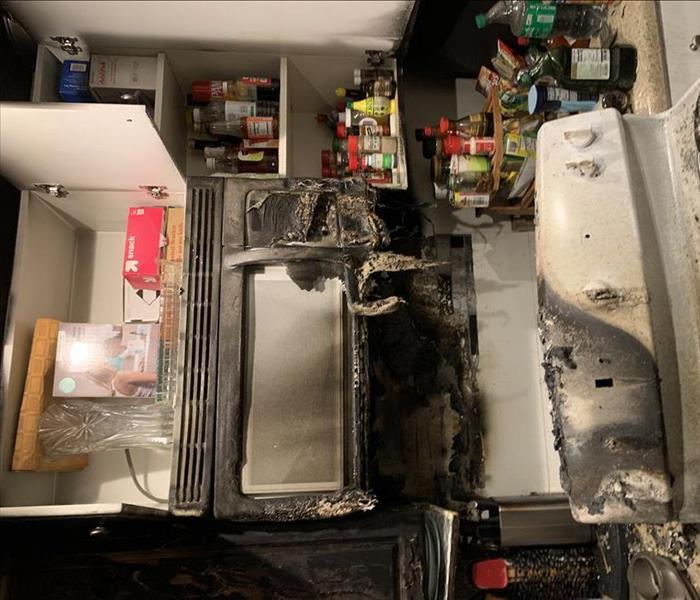 In this blog, we will explore the reasons why air quality testing is essential after a fire, as well as how these tests work.
In this blog, we will explore the reasons why air quality testing is essential after a fire, as well as how these tests work.
After experiencing a fire, the immediate focus is often on assessing and repairing visible damage. However, the air quality within a fire-damaged structure is equally crucial to address. Air quality testing plays a vital role in ensuring a safe environment for occupants and aiding in effective fire damage restoration. In this blog, we will explore the reasons why air quality testing is essential after a fire, as well as how these tests work. By understanding the importance of air quality testing, homeowners and businesses can take the necessary steps to restore a healthy living or working environment.
Importance of Air Quality Testing After a Fire
- Identification of Invisible Contaminants: Smoke and soot particles left behind after a fire can permeate the air and settle on surfaces, leading to long-term exposure risks. Without air quality testing, these invisible contaminants can go unnoticed, posing potential health hazards to occupants. Testing helps identify the presence of harmful particles, allowing for appropriate remediation measures.
- Comprehensive Restoration: Building materials, including walls, ceilings, and floors, may release volatile organic compounds (VOCs) when exposed to fire and smoke. These compounds can impact the air quality and linger long after the fire has been extinguished. Air quality testing helps ensure that comprehensive restoration efforts address these compounds, creating a healthy and habitable environment.
- Effective Remediation Planning: Knowing the level and types of contaminants in the air is crucial for planning effective fire damage restoration. Air quality testing provides valuable data on the extent of contamination, allowing professionals to make informed decisions regarding the remediation process. This ensures that the appropriate techniques and equipment are utilized to restore air quality effectively.
How Air Quality Tests Work
- Initial Assessment: Certified professionals, such as those from SERVPRO®, conduct a comprehensive evaluation of the fire-damaged structure to determine the key areas of concern. They identify potential sources of contamination and develop a testing plan accordingly.
- Sample Collection: Various methods are used for air quality testing, including air samplers, particle counters, and gas analyzers. These tools collect samples of the indoor air, as well as particles settled on surfaces and materials. The samples are then sent to a laboratory for analysis.
- Laboratory Analysis: In the laboratory, the collected samples undergo rigorous testing and analysis. Professionals assess the composition of the air, measure the levels of particulate matter, and identify the presence of harmful chemicals or VOCs. The results provide critical insights into the air quality and contamination within the space.
- Interpretation of Results: Once the analysis is complete, professionals interpret the results to determine if air quality remediation is necessary. Based on the findings, they developed a customized plan for restoring and improving the air quality.
Air quality testing after a fire is a crucial step in the fire damage restoration process. It helps identify invisible contaminants, facilitates comprehensive restoration efforts, and enables effective remediation planning. By investing in professional air quality testing, homeowners and businesses can ensure a safe and healthy living or working environment post-fire. Certified professionals, such as those from SERVPRO, employ advanced techniques and equipment to collect samples and conduct thorough laboratory analyses. Remember, when it comes to fire damage restoration and air quality testing, rely on certified experts to restore your property to its pre-fire condition and promote a healthy indoor environment.
8 Tips for Keeping your Vacation Home Mold Free
3/14/2024 (Permalink)
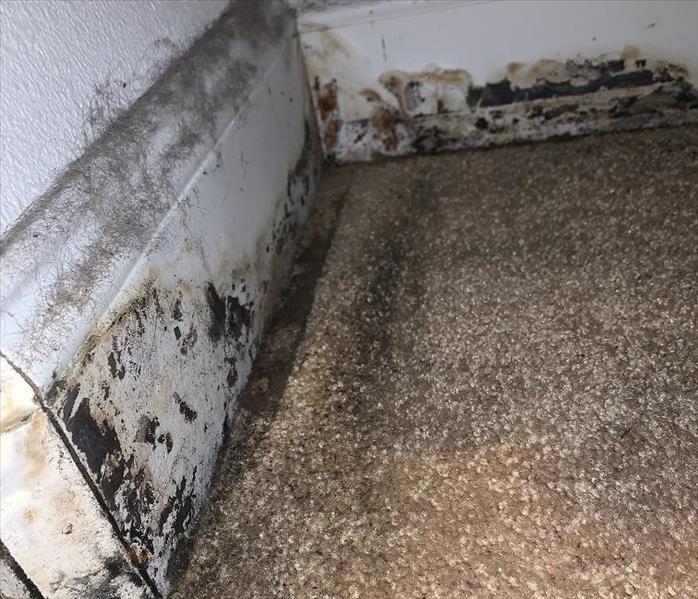 Owning a vacation home is a joy, but keeping it mold-free, especially during periods of vacancy, can be a concern.
Owning a vacation home is a joy, but keeping it mold-free, especially during periods of vacancy, can be a concern.
Owning a vacation home is a joy, but keeping it mold-free, especially during periods of vacancy, can be a concern. We've got you covered with eight practical tips to maintain a mold-free vacation home throughout the year. These simple yet effective measures will help you return to your retreat worry-free.
- Humidity Control
Invest in a dehumidifier to regulate indoor humidity levels, especially during warmer seasons. Mold thrives in damp environments, so keeping humidity in check is a crucial preventive step.
- Prioritize Ventilation
Ensure good ventilation by utilizing exhaust fans and leaving windows open when possible. Adequate airflow helps minimize moisture buildup, creating an environment less conducive to mold growth.
- Regular Cleaning Routine
Dust and dirt can create a breeding ground for mold. Establish a routine for regular cleaning, even during the off-season, to prevent the accumulation of particles that may contribute to mold issues.
- Leak Inspection
Conduct regular inspections for leaks both inside and outside your vacation home. To prevent mold from growing and spreading, promptly fix any leaks you find as quickly as possible.
- Roof Check-Up
Regularly inspect your vacation home's roof for signs of damage. A well-maintained roof is your first line of defense against water leaks, helping to stave off potential mold concerns.
- Tighten Up Windows and Doors
Ensure that windows and doors are tightly sealed to prevent rain or humidity from seeping in. Proper sealing helps protect against unwanted moisture that could lead to mold growth.
- Keep It Sunlit
Sunlight is a natural mold deterrent. During your visits, open curtains and blinds to let the sunlight in. This not only brightens up your space but also prevents mold development.
- Prioritize Regular Mold Checks
It's essential to add mold checks to your inspection checklist for thorough maintenance. Mold can be a silent intruder, and regular assessments ensure early detection and timely intervention. During your routine inspections, pay close attention to areas prone to moisture, such as bathrooms, kitchens, and basements. Look for any signs of water damage, discoloration, or musty odors. Also remember to inspect ventilation systems and windows to ensure proper airflow, reducing the risk of humidity buildup.
By incorporating these practical tips into your vacation home maintenance routine, you'll create an environment that's less welcoming to mold, allowing you to enjoy your retreat mold-free year-round.
The Importance of Timely Water Damage Restoration
2/19/2024 (Permalink)
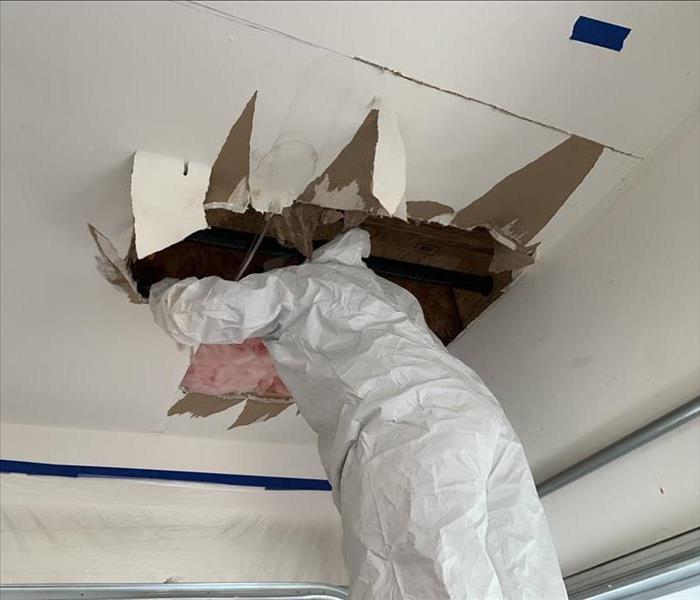 The importance of timely water damage restoration cannot be overstated.
The importance of timely water damage restoration cannot be overstated.
Water damage is a silent intruder that can wreak havoc on homes and businesses if not addressed promptly. Whether caused by burst pipes, leaks, or natural disasters, the consequences of water damage can escalate rapidly.
Avoiding Secondary Damage
Water has the potential to compromise the structural integrity of buildings. Wood can warp, metal can corrode, and drywall can disintegrate when exposed to prolonged water exposure.
Water damage often leads to secondary issues such as rot, decay, and deterioration of building materials. Swift restoration minimizes the likelihood of secondary damage, reducing the overall scope of repairs and associated costs.
Protecting Belongings and Possessions
Water damage doesn't discriminate; it can affect personal belongings, furniture, and valuables. Timely restoration efforts can salvage and protect these items, preventing irreparable damage and minimizing the financial impact on homeowners or businesses.
Preventing Electrical Hazards
Water and electricity are a dangerous combination. Water damage can compromise electrical systems, leading to potential hazards such as electrical shocks or fires. Timely restoration helps address electrical issues promptly, mitigating safety risks.
Minimizing Business Downtime
For businesses, downtime due to water damage can result in significant financial losses. Swift restoration efforts minimize business interruptions, allowing operations to resume quickly and reducing the impact on revenue and customer relationships.
Addressing Water Contamination
Depending on the source of water damage, the water itself may be contaminated. This is common in cases of sewage backups or flooding. Insulation and flooring materials are particularly susceptible to water damage. Timely restoration prevents these materials from becoming breeding grounds for mold and helps retain the insulation and flooring's structural integrity.
Streamlining the Claims Process
Timely restoration can also expedite the insurance claims process. Documenting the damage and promptly initiating restoration efforts provides insurers with the necessary information, expediting the assessment and settlement of claims.
Perhaps the most intangible but valuable benefit of timely water damage restoration is the restoration of peace of mind. Swift action alleviates stress and anxiety, allowing homeowners and business owners to regain control of their living or working spaces.
The importance of timely water damage restoration cannot be overstated. By understanding the urgency and enlisting professional restoration services promptly, individuals and businesses can mitigate the impact of water damage, ensuring a faster return to normalcy and a more resilient future.
Why Immediate Storm Damage Cleanup Is Important
1/14/2024 (Permalink)
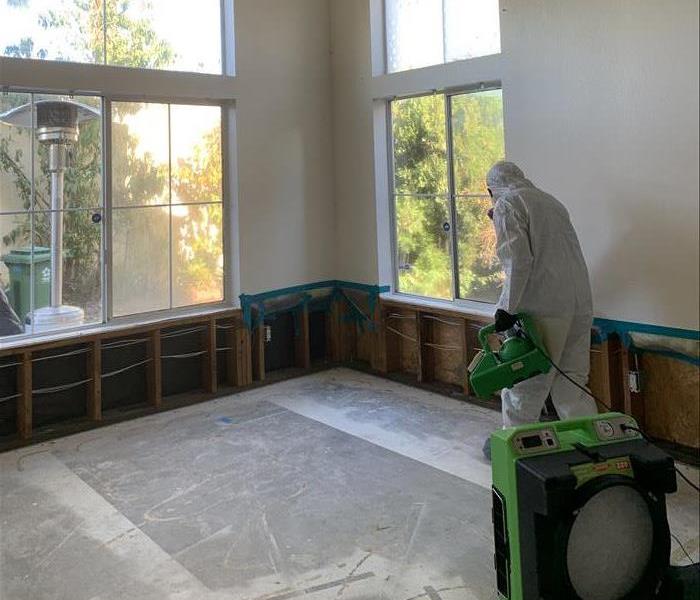 In the aftermath of a storm, the importance of swift action cannot be overstated.
In the aftermath of a storm, the importance of swift action cannot be overstated.
From thunderstorms to hurricanes, the aftermath of a storm can be devastating, leaving behind a trail of destruction. While the safety of your loved ones is a priority during such emergencies, it's equally crucial to consider the immediate cleanup and restoration of your home or business.
The Urgency of Prompt Action
When storms strike, they leave more than just visible damage. Water intrusion, structural harm, and mold growth can quickly compound if not addressed swiftly. Here's why prompt storm damage cleanup is of utmost importance:
Mitigating Further Damage: Time is of the essence. Water damage, if left unchecked, can seep into walls, flooring, and furniture, leading to structural weakening, mold growth, and irreparable harm. Prompt cleanup helps mitigate these risks.
Protecting Health and Safety: Standing water can become a breeding ground for harmful bacteria and mold growth within hours. Acting promptly prevents these hazards from taking root, safeguarding the well-being of your family or employees.
Preserving Possessions: Swift action can often salvage personal belongings, furniture, and valuable items that might otherwise suffer irreparable damage due to prolonged exposure to water or debris.
Steps to Effective Storm Damage Cleanup
- Safety First: Prioritize personal safety and ensure the area is safe to enter. Turn off electricity and gas supplies to avoid potential hazards.
- Assessment and Documentation: Document the damage by taking photographs or videos. This will assist with insurance claims and provide a clear picture of the extent of the damage.
- Water Extraction and Drying: Remove excess water using specialized equipment and employ industrial-grade drying techniques to prevent moisture from causing further harm.
- Cleaning and Sanitization: Thoroughly clean affected areas to eliminate contaminants and prevent mold growth. This step is crucial for ensuring a safe and healthy environment.
- Restoration and Reconstruction: Repair structural damage, replace damaged materials, and restore your property to its pre-storm condition.
The Benefits of Professional Assistance
While a DIY approach might seem cost-effective initially, professional storm damage cleanup offers several advantages. Trained professionals possess the expertise, experience, and specialized equipment necessary to handle storm damage effectively. Professionals also act swiftly, minimizing damage and restoring your property promptly, preventing long-term issues. From water extraction to structural repairs, professionals offer a complete solution, ensuring thorough cleanup and restoration.
In the aftermath of a storm, the importance of swift action cannot be overstated. Prompt storm damage cleanup not only protects your property but also ensures the safety and well-being of those affected. At SERVPRO of Pleasanton/Dublin, our dedicated team is committed to providing reliable and efficient storm damage cleanup services, helping you navigate through these challenging times with ease.
The Benefits of Hiring Professionals to Clean Up Fire and Smoke Damage
12/21/2023 (Permalink)
 When facing the aftermath of a fire, hiring professionals for fire and smoke damage cleanup is the most effective choice.
When facing the aftermath of a fire, hiring professionals for fire and smoke damage cleanup is the most effective choice.
When fire strikes, the aftermath can be devastating, leaving behind not only charred remnants but also smoke and soot damage. The process of cleaning up after a fire is a challenging and complex task that requires the expertise of professionals who specialize in fire and smoke damage restoration. In this blog, we'll explore the numerous benefits of hiring professionals to tackle the cleanup, emphasizing why it's the wisest choice for your property and well-being.
Rapid Response
One of the key advantages of hiring professionals for fire and smoke damage cleanup is their ability to respond quickly. The longer you wait to address the damage, the more extensive and costly the restoration process becomes. SERVPRO® has a 24/7 emergency response team ready to assess the damage, prevent further damage, and begin the cleanup process immediately. Speedy action can help minimize long-term damage and costs!
Safety First
Fire and smoke damage cleanup is not only about aesthetics but also about safety. Professionals are well-versed in safety protocols, ensuring that you and your family are not exposed to hazards. Smoke and soot particles can contain substances that, when inhaled, pose serious risks. Professional teams wear the necessary protective equipment and have the experience to handle these risks effectively.
Thorough Inspection and Assessment
Effective fire and smoke damage cleanup begins with a comprehensive inspection and assessment of the affected area. Professionals like SERVPRO® use their expertise to identify damage that may not be immediately visible, ensuring nothing is overlooked. This meticulous approach helps prevent secondary issues that could arise if damage is left unaddressed.
Specialized Equipment
Professional restoration companies are equipped with specialized tools and equipment designed to handle fire and smoke damage efficiently. These tools include HEPA vacuums, air purifiers, industrial-grade cleaning agents, and ozone machines that are not typically available to the average homeowner. The use of such equipment ensures a more thorough and effective cleanup.
Structural Restoration
In addition to cleaning and deodorizing, professionals can address structural damage caused by the fire. They have the skills to repair or replace damaged building materials, ensuring that your property is not only cleaned but also restored to its pre-fire condition.
Odor Removal
The lingering smell of smoke can be extremely persistent and unpleasant. Professional restoration companies have the expertise to eliminate odors through a combination of techniques, including air purification, thermal fogging, and ozone treatments, ensuring that your property smells fresh and clean once again.
Insurance Assistance
Dealing with insurance claims can be a complex and overwhelming process. Professional restoration companies like SERVPRO® can assist you in documenting the damage, estimating repair costs, and communicating with your insurance provider. Their expertise can help streamline the claims process, ensuring that you receive fair compensation for your losses.
When facing the aftermath of a fire, hiring professionals for fire and smoke damage cleanup is the most effective choice. Their rapid response, safety measures, specialized equipment, thorough assessment, structural restoration, odor removal, and insurance assistance all work together to make your property whole again. By choosing professionals like SERVPRO®, you can ensure a faster, safer, and more comprehensive recovery from the devastation of a fire. Don't leave your future to chance – let the experts help you restore your home and peace of mind!
Mold in Air Ducts - Everything You Need to Know
11/15/2023 (Permalink)
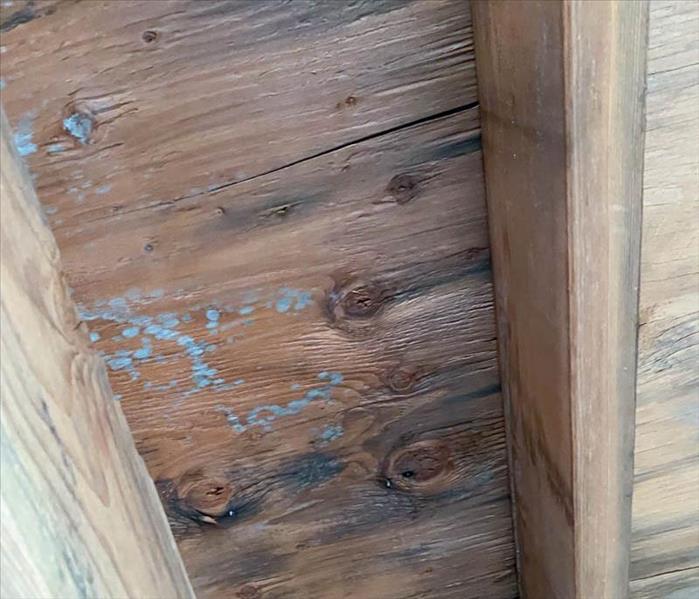 Identifying mold in your air ducts may not be obvious.
Identifying mold in your air ducts may not be obvious.
Your home in Pleasanton, CA is your sanctuary, and maintaining its air quality is essential for your comfort and well-being. One common issue that can impact the air you breathe is mold in air ducts. In this blog, we'll explore everything you need to know about this potential problem, how it happens, and what you can do to address it.
Understanding Mold in Air Ducts
Mold in air ducts is a concern for Pleasanton homeowners for several reasons. Mold thrives in damp, dark environments, and air ducts can provide the ideal conditions. When there's excess moisture present in your HVAC system, it can promote mold growth on the surfaces of your ductwork.
Identifying mold in your air ducts may not be obvious, but some indicators include musty odors, visible mold growth around vents, or an increase in allergy symptoms among your family members. If you notice any of these signs, it's essential to take action promptly.
The Dangers of Mold in Air Ducts
Mold in air ducts can present various risks, including:
- Reduced Air Quality: Mold spores can become airborne and circulate through your home, leading to compromised indoor air quality.
- HVAC System Efficiency: Mold growth in ducts can block airflow, making your HVAC system less efficient. This, in turn, can increase energy bills and the wear and tear on your equipment.
- Structural Damage: If left untreated, mold can corrode and weaken ductwork, leading to costly repairs or replacements.
Preventing Mold Growth in Air Ducts
You can take several measures to prevent mold in your Pleasanton home's air ducts. Schedule routine HVAC maintenance to keep your system in peak condition. This includes cleaning and inspecting your air ducts for signs of mold. Ensure your home is properly ventilated and keep humidity levels within the recommended range.
It is also crucial to fix any leaks or water damage promptly as mold relies on a source of water to grow and spread. Lastly, regularly change or clean your HVAC filters to prevent the buildup of debris that could contribute to mold growth.
Dealing with Mold in Air Ducts
If you suspect mold in your Pleasanton home's air ducts, here's what you can do:
- Contact SERVPRO® of Pleasanton/Dublin to conduct a thorough inspection. Our experts will identify the extent of the problem and recommend the appropriate remediation steps.
- If mold is present, professional remediation is crucial. We'll safely remove the mold and clean your air ducts to prevent its return.
- Our experts can also provide guidance on preventing future mold growth, including improving ventilation and addressing moisture sources.
Mold in air ducts is a concern for Pleasanton homeowners, but with awareness and preventative measures, you can maintain clean and healthy indoor air. Should you suspect or discover mold in your air ducts, don't hesitate to contact SERVPRO® of Pleasanton/Dublin. We are here to ensure your home's air quality is at its best, providing a healthier and more comfortable living environment.
DIY vs. Professional Water Damage Cleanup - Which Option is Best?
10/10/2023 (Permalink)
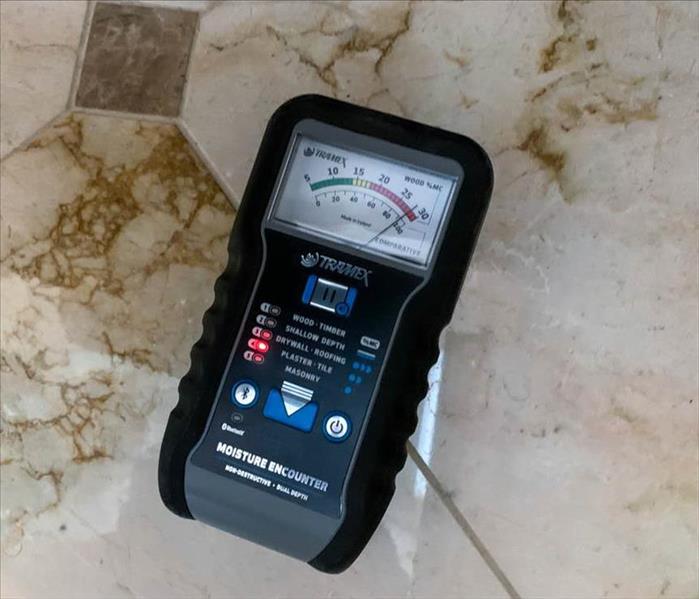 Professional water damage restoration services from SERVPRO® are the most reliable way to ensure a thorough and efficient recovery process.
Professional water damage restoration services from SERVPRO® are the most reliable way to ensure a thorough and efficient recovery process.
Water damage can strike unexpectedly, leaving homeowners with the crucial decision of whether to tackle the restoration themselves or seek professional assistance. In this blog, we'll explore the pros and cons of DIY water damage restoration vs. professional services, helping you make an informed choice that suits your Pleasanton, CA, home.
The DIY Approach
DIY water damage restoration can seem like a cost-effective option, but it comes with some significant challenges. Most homeowners lack the knowledge and expertise needed to assess the extent of damage accurately. Water can penetrate hidden areas, leading to hidden problems like mold growth.
DIY efforts typically involve standard household tools, which may not be sufficient for thorough drying and restoration. Professional-grade equipment, like industrial dehumidifiers and moisture meters, is essential for effective restoration. Incomplete drying can lead to mold growth, which can be hazardous to your health. Professionals have the training to prevent and address mold issues.
If DIY efforts lead to further damage or mold growth, insurance claims may be denied. Professional services often have the necessary certifications and can navigate insurance processes more effectively.
Professional Water Damage Restoration
Seeking professional services from SERVPRO® of Pleasanton/Dublin offers numerous advantages. Our trained technicians have years of experience in assessing and mitigating water damage. They can identify hidden issues, ensure thorough drying, and prevent mold growth. We use advanced equipment to extract water, dry affected areas, and monitor moisture levels. This ensures the most efficient and effective restoration. Our team is skilled in mold prevention and remediation, reducing the risk of long-term concerns and property damage.
Our team of professionals works swiftly to minimize damage and prevent further issues. Prompt action can save you time and money in the long run. SERVPRO® can work directly with your insurance company to ensure a smooth claims process, increasing the likelihood of coverage for restoration costs.
While DIY water damage restoration may be tempting to save money upfront, the risks and challenges associated with it can lead to costly consequences. In Pleasanton, CA, professional water damage restoration services from SERVPRO® of Pleasanton/Dublin are the most reliable way to ensure a thorough and efficient recovery process. Our experienced technicians, state-of-the-art equipment, and insurance expertise can provide peace of mind and a swift return to a safe and dry home. When water damage strikes, make the smart choice and contact SERVPRO® for professional restoration services tailored to your Pleasanton property's unique needs. Your home deserves the best care, and we are here to provide it.
Navigating Post-Storm Water Damage in Pleasanton
9/26/2023 (Permalink)
When storms unleash their fury, they can leave behind a trail of destruction. As a homeowner or property owner in Pleasanton, CA, being prepared to tackle the aftermath of water damage is essential. In this comprehensive guide, we'll walk you through the steps to effectively deal with water damage after a storm, protecting your investment, and restoring your property to its former glory.
1. Assessing the Damage
After the storm subsides, the first step is to assess the extent of the water damage. Inspect both the interior and exterior of your property. Look for signs of water intrusion, such as wet spots, discoloration, and visible cracks. Pay special attention to basements, crawl spaces, and attics, which are more susceptible to flooding.
2. Safety First
Before you begin any restoration work, prioritize safety. Turn off electrical power to the affected areas to avoid electrical hazards. Wear protective gear such as gloves, masks, and rubber boots to prevent potential health risks associated with contaminated water.
3. Documenting the Damage
Take detailed photographs and videos of the water-damaged areas. These visuals will be invaluable when dealing with insurance claims. Make a thorough inventory of damaged items, including furniture, electronics, and personal belongings.
4. Contacting Your Insurance Provider
Reach out to your insurance company as soon as possible to report the water damage. Provide them with accurate information and the documentation you've gathered. Understanding your insurance coverage and filing a claim promptly will expedite the recovery process.
5. Mitigation and Drying
Start the drying process immediately to prevent mold growth and further structural damage. Open windows for ventilation, use fans, dehumidifiers, and absorbent materials to remove excess moisture. Consider seeking professional assistance if the damage is extensive.
6. Salvaging Belongings
Evaluate your belongings to determine what can be salvaged and what needs to be discarded. Porous items like mattresses and upholstered furniture may need to be replaced to avoid mold growth. Non-porous items can often be disinfected and restored.
7. Professional Restoration Services
For severe water damage, it's wise to hire a professional restoration company experienced in dealing with storm-related damage. They have the expertise, equipment, and techniques to effectively restore your property and prevent long-term issues.
8. Preventive Measures
After your property has been restored, take steps to prevent future water damage. Regularly inspect your property for leaks, ensure your gutters and downspouts are clear, and consider waterproofing vulnerable areas.
While storms can bring unexpected challenges, being well-prepared can make all the difference in safeguarding your Pleasanton, CA home. By promptly addressing water damage, documenting the process, and seeking professional assistance when needed, you can navigate the post-storm aftermath with confidence, ensuring your property remains a haven for years to come.





 24/7 Emergency Service
24/7 Emergency Service







